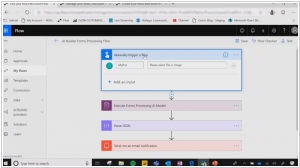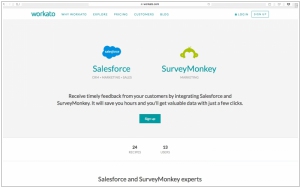Microsoft Power Automate vs Workato
May 30, 2023 | Author: Michael Stromann
Microsoft Power Automate and Workato are both popular automation platforms that enable businesses to streamline and automate their workflows. Microsoft Power Automate, formerly known as Microsoft Flow, is part of the Microsoft Power Platform and integrates seamlessly with other Microsoft products and services. It offers a visual interface and a vast library of pre-built connectors, allowing users to create automated workflows and integrate various applications and data sources. Power Automate also provides AI capabilities for advanced automation scenarios. On the other hand, Workato is a cloud-based automation and integration platform that focuses on connecting different apps, databases, and systems to automate business processes. It offers a wide range of pre-built connectors and recipes, along with a visual interface for designing complex workflows. Workato also provides AI-powered data mapping and transformation features.
See also: Top 10 Cloud Integration software
See also: Top 10 Cloud Integration software
Microsoft Power Automate vs Workato in our news:
2023. Microsoft’s new Power Platform AI copilot will build your apps for you
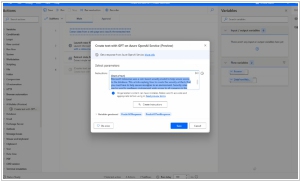
Microsoft has added its AI copilot to Power Apps, Power Virtual Agents and Power Automate. The idea here is to use AI to make using these tools for building line-of-business apps, flows and bots even easier by letting users use natural language to describe what they want to build. At its core, this works a bit like using the new Bing or ChatGPT. You tell the Power Platform Copilot what you want and then refine these ideas through a back-and-forth with the bot in the chat sidebar. In Power Apps, the main low-code tool of the Power Platform, users can now use sentences like “Create a time and expense application to enable my employees to submit their time and expense reports” and it will generate this app for them.
2021. Microsoft’s Power Automate Desktop is now free for all Windows 10 users
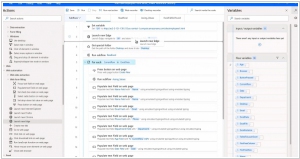
Microsoft is now offering Power Automate Desktop, its robust tool for creating automated desktop workflows, to all Windows 10 users at no cost. Power Automate Desktop is referred to as an "attended Robotic Process Automation" solution, but it can be likened to a highly advanced macro recorder. With its repertoire of 370 prebuilt actions, it facilitates the creation of workflows across various applications. However, its true potential lies in empowering users to develop custom scripts that automate repetitive and time-consuming tasks. To explore Power Automate Desktop, interested users can download it directly from Microsoft. In the upcoming weeks, it will be included in Microsoft's Insider Builds for Windows 10 and eventually become an integral part of Windows 10, even extending to the standard Windows Home version.
2020. Microsoft brings new process mining features to Power Automate
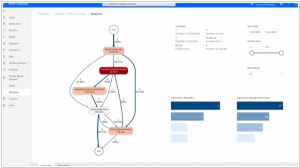
Power Automate, the workflow optimization platform by Microsoft, introduces a new tool called Process Advisor. This innovative process mining tool offers a collaborative environment for developers and business users to collaboratively create new automations. The concept behind Process Advisor recognizes that business users possess intricate knowledge of specific processes. With the new tool, business users can now record their execution of processes, such as refund procedures, and share them with developers who may not be well-versed in these processes. This facilitates effective collaboration and allows developers to gain valuable insights into the intricacies of various business operations.
2020. Microsoft brings new robotic process automation features to its Power Platform
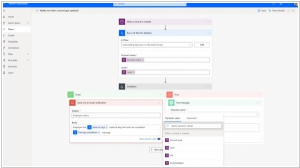
Earlier this year, Microsoft made the acquisition of Softomotive, a key player in the low-code robotic process automation field, primarily focusing on Windows. Building upon this, the company has now introduced Power Automate Desktop, a novel application leveraging Softomotive's technology, enabling users to automate desktop workflows without requiring programming skills. Power Automate already facilitated the connection of web-based applications, akin to platforms like Zapier and IFTTT. However, Microsoft further expanded its capabilities by introducing a browser extension last year, facilitating the integration of native system components with Power Automate. With the inclusion of Softomotive's technology and the launch of this new low-code Windows application, Microsoft is taking integration to the next level by seamlessly incorporating it within the native Windows user interface.
2020. Microsoft acquires robotic process automation platform Softomotive

Microsoft CEO Satya Nadella has officially announced the acquisition of Softomotive, a software robotic automation platform. As part of the deal, Softomotive will be integrated into the Microsoft Power Automate platform. Softomotive currently serves approximately 9,000 customers worldwide. The WinAutomation platform, developed by Softomotive, will be made available to Power Automate users under a freely accessible RPA attended license. This collaboration will introduce a range of new capabilities within Power Automate, including Softomotive's WinAutomation, which offers a low-code desktop automation solution. Previously, Power Automate lacked desktop automation tools, and Microsoft aims to address this gap with the integration of Softomotive's technology.
2019. Microsoft introduced own RPA software - UI Flows
Microsoft has rebranded its application integration and business process automation platform, formerly known as Microsoft Flow, as Power Automate. Along with this renaming, the company has introduced a new addition to the platform called UI Flows, which encompasses RPA (Robotic Process Automation) software. RPA enables the automation of repetitive tasks at the user interface level. The RPA system records user actions, such as mouse clicks and text copying, and creates a software robot to replicate those actions. This functionality allows for the creation of automated processes and integration with legacy software that lacks an API for direct integration. For instance, the provided video demonstrates how to develop a robot to transfer data from a legacy medical system to a cloud service. It is important to note that Microsoft Power Automate now combines both RPA and API integrations with popular cloud services, providing a comprehensive solution.
2018. Workato raises $25M for its integration platform
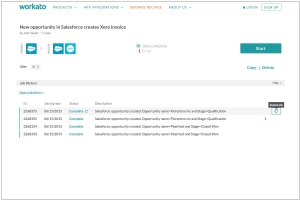
Workato, a startup that provides a platform for integration and automation in businesses, has successfully secured $25 million in Series B funding. Workato competes with renowned companies such as MuleSoft, SnapLogic, and Microsoft's Logic Apps. Major SaaS players, including Salesforce, have invested in Workato in previous funding rounds. Workato's service is similar to other integration services available (think of it as the enterprise version of IFTTT) as it facilitates the connection of disparate systems and services. Users can set up triggers to initiate specific actions, such as sending a message to Slack and creating an invoice when someone signs a contract on DocuSign. Like its competitors, Workato seamlessly integrates with various SaaS tools used by companies, whether it's Marketo and Salesforce or Slack and Twitter. Furthermore, Workato offers a user-friendly drag-and-drop interface for performing these tasks.
2016. Microsoft Flow is available on iOS
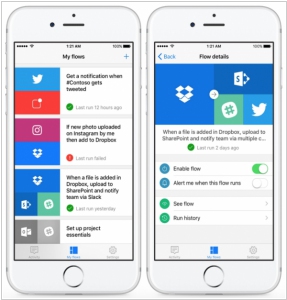
Microsoft Flow, the workflow management tool, has made its debut on iOS. This powerful tool enables users to combine two or more cloud services to create customized workflows, automating tasks such as file synchronization, alerting, and data organization. While other competing services like IFTTT and Zapier have been available for a longer time and offer a wider range of supported connections, Microsoft Flow differentiates itself by focusing on integrations with Microsoft's own business tools, including Office 365, Dynamics CRM, PowerApps, and Yammer, as well as popular organizational tools like MailChimp, GitHub, Salesforce, and Slack. Despite its emphasis on Microsoft's tools, Microsoft Flow can still be used to automate various common scenarios. For example, you can receive a text message whenever your boss sends you an email, save the results of a Twitter search to an Excel file, copy files from OneDrive to SharePoint, or transfer photos from Instagram to Dropbox, among many other possibilities. With the newly introduced iOS application, users now have the convenience of managing their previously created "flows" directly from their smartphones. This means you can easily toggle them on or off, access their properties, and review run history reports to ensure optimal performance and error-free execution.

